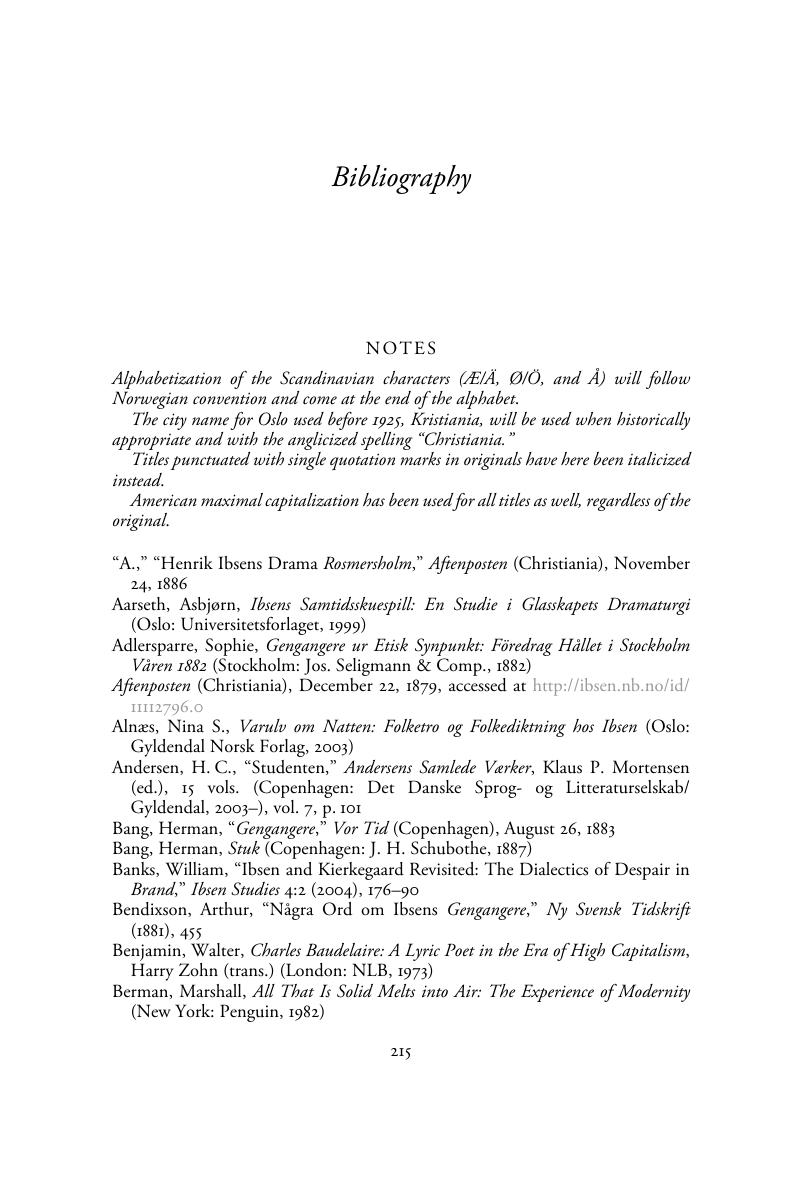Bibliography
Published online by Cambridge University Press: 05 April 2015
Summary

- Type
- Chapter
- Information
- Ibsen's HousesArchitectural Metaphor and the Modern Uncanny, pp. 215 - 222Publisher: Cambridge University PressPrint publication year: 2015



